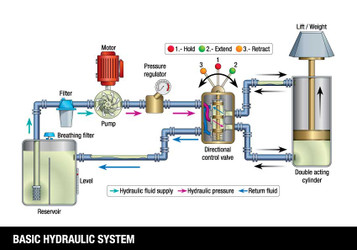Unlocking the Benefits of a Hydraulic Pump: A Comprehensive Guide
Jan 23rd 2025
Unlocking the Benefits of a Hydraulic Pump: A Comprehensive Guide
Did you know hydraulic pumps play a crucial role in various industries, from construction to agriculture? In this blog post, we’ll dive into the world of hydraulic pumps, exploring their functions, components, types, and applications. Get ready to unlock the full potential of these powerful devices, and discover how they can improve your operations.
Short Summary
- Hydraulic pumps are essential components of hydraulic systems, converting mechanical energy into fluid energy.
- Different types of hydraulic pumps have unique characteristics and applications in various industries.
- Recent developments in technology enable advancements in performance, efficiency, maintenance capabilities, and reliability for optimal performance over time.
Understanding Hydraulic Pumps
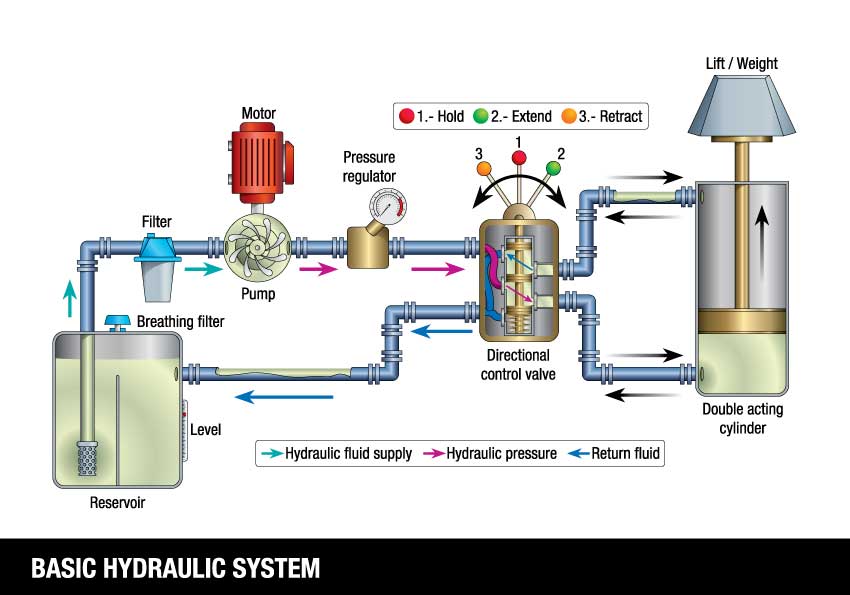
Hydraulic pumps are the heart of hydraulic systems, converting mechanical and electrical power back into fluid energy to initiate the hydraulic process. They are incredibly versatile, coming in various forms, such as gear, piston, and vane pumps. Hydraulic pumps are essential in construction, excavation, automotive manufacturing, agriculture, and defense contracting.
The key characteristic of how hydraulic pumps operate is their ability to use pressurized fluids to achieve the desired result. Let’s dive deeper into how hydraulic pumps work and their key components.
How Hydraulic Pumps Work
Hydraulic pumps convert mechanical energy into fluid energy, generating pressure and flow for various operations. They employ an incompressible fluid to operate their equipment. Hydraulic oil is the most common choice, but food-grade alternatives are also available. The power source for a hydraulic pump can be an electric motor, internal combustion engine, human labor, or compressed air.
In the case of gear pumps, pressure is generated by the meshing of gear teeth, which circulates the fluid around the gears and pressurizes the pump outlet side. The pump inlet plays a crucial role in this process. Gear pumps are simple and economical pumping mechanisms with low volumetric efficiency. The performance of a hydraulic pump depends on the size and configuration of its internal chambers, the rate of operation, and the power provided to the pump.
Key Components of Hydraulic Pumps
The primary elements of a hydraulic pump include the reservoir, which stores the fluid; valves, which initiate, terminate, and direct the fluid flow; piping, which transports the fluid; pump, which converts mechanical energy into fluid energy; and actuators, which execute the flow or desired action. The pump’s design, such as gear pumps with internal gears, impacts its performance and efficiency.
Hydraulic Pumps Types and Their Applications

Understanding the different types of hydraulic pumps and their applications is essential in determining the right pump for your needs. Hydraulic pumps come in various forms, such as gear, piston, a vane pump, hand, air and electric. Each pump type has its unique characteristics and uses. Let’s take a closer look at these hydraulic pump types and their specific applications.
Gear Pumps
Gear pumps are simple and economical pumps with low to high volumetric efficiency yet. They are common in truck-mounted hydraulic systems. Hydraulic gear pumps operate by trapping oil in the spaces between the teeth of the pump’s two gears and the body of the pump. As the gears rotate, they transport the oil around the circumference of the gear cavity and by centrifugal force move it out through the outlet port.
Gear pumps are known for their versatility, effectiveness, and straightforward design. They are used in various applications, from automotive to industrial, and often in applications where a high-pressure, low-flow, constant flow rate is required.
Piston Pumps
Piston pumps are high-pressure pumps with a higher initial cost and complexity than gear pumps. They are often used in truck-mounted cranes and snow and ice control systems.
Piston pumps, including the axial piston pump, utilize a cylinder block with pistons that move in and out to extract oil from the supply port and then pressurize oil flow into it through the outlet. Among various types, axial piston pumps are available in both radial and axial configurations and can be either fixed displacement or variable displacement.
Vane Pumps
Vane pumps use vanes mounted to a rotor to generate hydraulic pressure. They were once popular in utility vehicles but have become less common due to the increased prevalence and accessibility of gear pumps. Vane pumps provide enhanced volumetric power efficiency and reduced noise compared to gear pumps.
Hydraulic Hand Pumps

Hydraulic hand pumps are manually operated pumps used for various applications, including hydraulic tools and presses. They draw oil into the cylinder when the hydraulic hand pump lever is pressed downwards, creating suction and pulling oil up through the pumping mechanism.
Hand pumps are versatile and reliable for a range of applications. They are easy to install and maintain and can be used in a variety of settings, from residential to industrial. They are also cost-effective and can be used in remote locations where electricity is unavailable.
Air Hydraulic Pumps
Air hydraulic pumps use compressed air to generate energy from hydraulic liquids. They are often used for lifting heavy loads and transporting materials. Air hydraulic pumps engage a piston when air pressure is applied, compressing the hydraulic cylinder and creating a pumping action. The primary components of air hydraulic pumps consist of a reservoir, a pump housing a hydraulic cylinder, a piston system, two valves, and a cylinder.
Electric Hydraulic Pumps
Electric hydraulic pumps use electricity to transfer hydraulic liquid to an actuator, which is essential in various machinery. They use an electric motor to drive a hydraulic pump, transferring fluid pressure to the cylinders, actuators, and hydraulic motors. This is how a hydraulic pump operates, making it a crucial component in the system. Electric pumps are utilized in a range of applications, including automotive, industrial, and agricultural machinery, and are also employed in construction, mining, and other heavy-duty operations.
Specialized Hydraulic Pumps
Specialized hydraulic pumps are designed for specific applications, such as dump and clutch pumps. Dump pumps are commonly used in waste equipment, while clutch pumps are employed when a transmission power take-off is unavailable or not readily accessible. Clutch pumps, however, have limitations regarding pump output flows under heavy loads exceeding 15 GPM, as the engine drive belt may slip under heavier loads.
Selection Criteria for Hydraulic Pumps

When choosing the right hydraulic pump, it’s important to consider factors such as the size of the pressure output and the driving force, which can be manual, air, electric, or fuel-powered. Other factors include PSI, RPM, max flow rate, shaft type, viscosity and type of fluid being pumped, operating torque, temperature, speed, and displacement.
Determining Pump Size
To assess the required size of a hydraulic pump based on the intended application, you can use the formula: horsepower = (flow rate x pressure) / (1,714 x efficiency). This calculation is based on the flow rate and pressure required for the system.
The system pressure flow rate is determined by measuring the system's volume and the duration for the fluid to pass through it. Pressure can be calculated by measuring the resistance of the system and the force necessary to overcome it.
Evaluating Driving Force
Evaluating the driving force needed for a hydraulic pump to function effectively is crucial in selecting the right pump for your needs. The driving force can be determined by assessing the fluid's pressure and flow rate. The flow rate can be calculated by dividing the pump's actual output in liters or gallons per minute by its theoretical output, expressed as a percentage. Pressure can be accurately measured using a manometer.
Assessing Pressure Output
Determining the necessary pressure output and flow rates for a hydraulic pump based on application requirements is essential in selecting the right pump. The pressure output can be ascertained with a pressure gauge or by calculating the flow rate.
Maintenance and Troubleshooting of Hydraulic Pumps
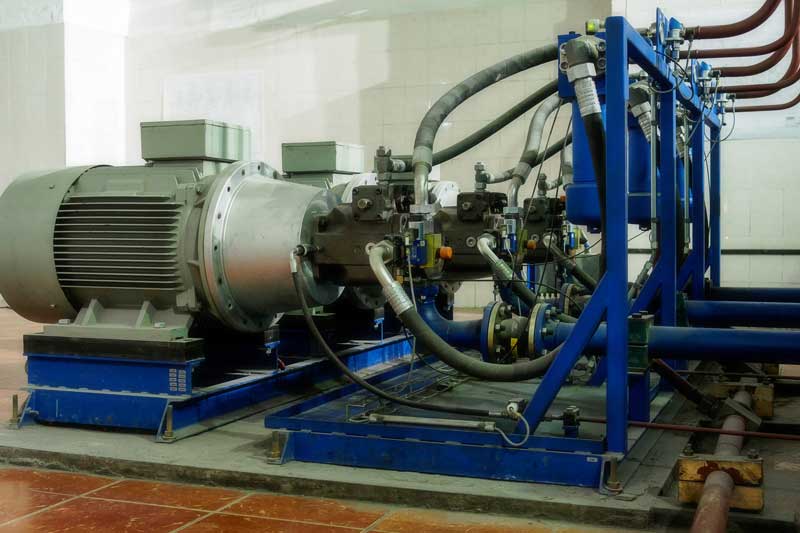
Maintaining and troubleshooting hydraulic pumps is critical to ensuring optimal performance and longevity of heavy equipment. Regular maintenance includes inspecting for leaks, measuring fluid cleanliness, and consistently changing and inspecting fluid filters.
Let's look closer at preventative maintenance practices and how to address common hydraulic pump issues.
Preventative Maintenance
Regular preventative maintenance is essential for the longevity and performance of hydraulic pumps. This includes inspecting fluid levels, checking for leaks, replacing hydraulic filters, and changing the hydraulic fluid on a consistent schedule. Additionally, ongoing care and maintenance, such as lubrication of critical parts, fluid analysis, and inspecting cylinders and actuators, are vital for the upkeep of hydraulic systems.
Common Hydraulic Pump Issues
Common issues associated with hydraulic pumps include contamination, overheating, air in the pump and fluid, low oil, incorrect oil or too much oil, failing seals, overpressure and overloading pump failure, and wear and tear.
Contamination from both air and water is the primary cause of hydraulic pump malfunction. Addressing these issues promptly can prevent further damage and costly repairs.
Repair vs. Replacement
Deciding whether to repair or replace a malfunctioning hydraulic pump depends on factors such as the magnitude of the damage, the cost of repair compared to replacement, and the age of the pump. Consulting with a reliable and experienced hydraulic manufacturer or supplier can help you make an informed decision and ensure the optimal performance of your hydraulic system.
Advancements in Hydraulic Pump Technology
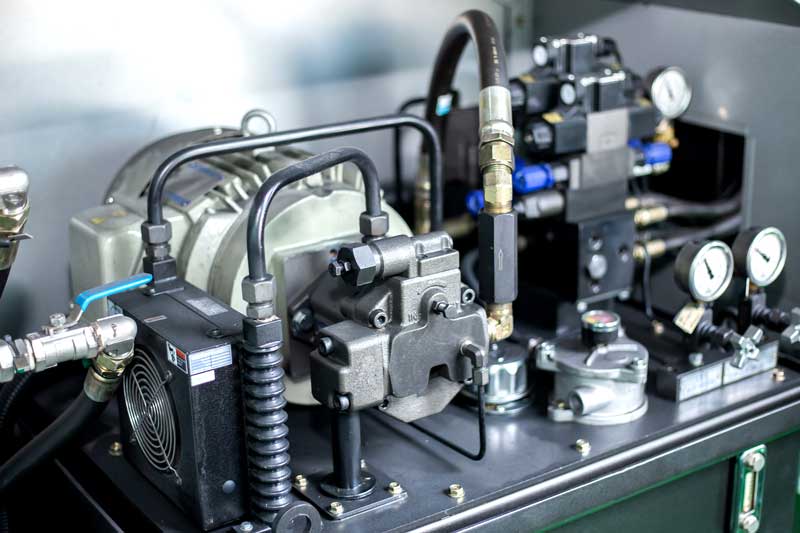
Recent innovations and improvements in hydraulic pump technology have led to significant advancements in performance, efficiency, and maintenance capabilities of existing systems. These developments include smart user interfaces, load-sensing valves, hybrid actuation systems for renewable energy, and electro-hydraulic systems. Let's explore these advancements and their benefits to hydraulic pump technology.
Energy Efficiency Improvements
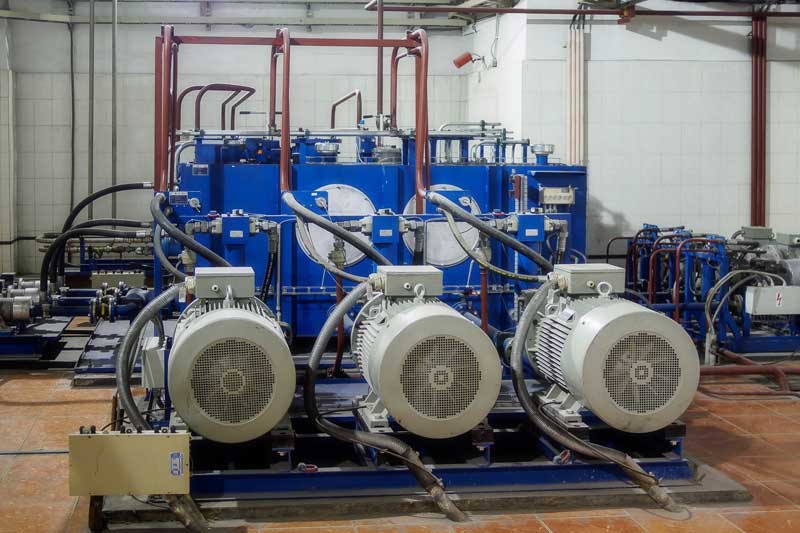
Developments in hydraulic pump technology have led to increased energy efficiency and reduced power consumption. Measures to improve energy efficiency include:
- Optimizing system parameters
- Improving electro-hydraulic motion control
- Utilizing high-quality pumps
- Using variable-speed pumps
Switching to a hydraulic fluid with a high viscosity index can also improve efficiency.
Enhanced Durability and Reliability
Advances in hydraulic pump design and materials have improved durability and reliability, resulting in longer-lasting and more dependable hydraulic systems. Seals and gaskets used in hydraulic systems have been designed to withstand extreme pressures and high temperatures, reducing leakage and improving durability. Regarding dependability and longevity, gear pumps are renowned, primarily when a gear pump is maintained correctly.
Smart Hydraulic Pumps
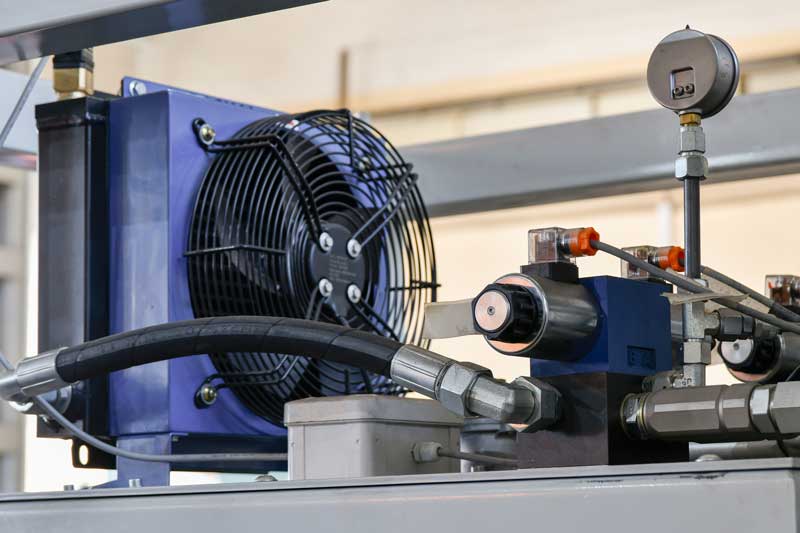
Smart hydraulic pumps integrate sensors and advanced diagnostics for improved performance and maintenance. They offer greater flexibility and control over the entire hydraulic system, with remote monitoring and control features. Smart hydraulic pumps, including hydraulic piston pumps, are utilized in a range of industries, such as industrial machinery, automotive, aerospace, medical, and agricultural.
Summary
In conclusion, hydraulic pumps are pivotal in powering various industries and applications. Understanding the different types of hydraulic pumps, their components, and their specific uses is essential in selecting the right pump for your needs. By staying up-to-date with advancements in hydraulic pump technology and adhering to proper maintenance and troubleshooting practices, you can ensure your hydraulic power system's optimal performance and longevity.
Frequently Asked Questions
What are the main types of hydraulic pumps?
- Gear Pumps:
-
- External Gear Pump consists of two meshed gears rotating in a closely fitted casing. The pump draws fluid into the teeth of the gears and transports it around the case to the discharge point.
- Internal Gear Pump: It has a gear within another gear. The inner gear is connected to the drive shaft, and as it rotates, it drives the outer gear. The liquid is transported between the teeth and the outer wall.
- Vane Pumps:
-
- These pumps consist of a series of vanes that are mounted to a rotor. As the rotor spins, the vanes trap fluid between them and the casing, which is transported to the discharge point. There are different types of these pumps, such as fixed displacement and variable displacement.
- Piston Pumps:
-
- Axial Piston Pump: It has a series of pistons arranged in a circular pattern within a cylinder block. It uses the reciprocating motion of the pistons to pump the fluid. They can be either bent-axis type or swashplate design.
- Radial Piston Pump: The pistons are arranged in a radial direction with respect to the drive shaft. Like the axial piston pump, the radial piston pump uses the reciprocating motion of the pistons to create flow.
- Screw Pumps:
-
- Screw pumps are used for high flows and relatively low pressures. They contain two or more screws that rotate together to move the fluid through the pump.
- Bent Axis Pumps:
-
- This is a type of axial piston pump where the pistons and the drive shaft are not parallel but at an angle. This design is typically more compact and can handle higher pressures and speeds.
- Peristaltic Pumps:
-
- Though not as common in industrial hydraulics, peristaltic pumps are used for delicate or sanitary applications. They consist of a flexible tube inside a circular pump casing and a rotor with rollers that compress the tube, pushing the fluid through.
- Gerotor Pumps:
-
- Gerotor pumps are a type of internal gear pump with a slightly different design. They use an inner gear with one less tooth than the outer gear, and as they rotate, they create a pumping action similar to that of an internal gear pump.
What is the main function of a hydraulic pump?
The main function of a hydraulic pump is to convert mechanical power into hydraulic energy and generate sufficient fluid flow to overcome the pressure imposed by the load. This makes it an essential component for many industrial applications.
How do I choose the right hydraulic pump for my system?
When choosing a hydraulic pump, consider the required flow rate, operating pressure, fluid type, efficiency, size, and cost. The nature of the application, such as whether it requires continuous operation or intermittent use, also plays an important role. It's often advisable to consult a hydraulic engineer or specialist to help select the right pump for your system.
How do you maintain a hydraulic pump?

Regular hydraulic pump maintenance is essential for its optimal performance and longevity.
Key maintenance steps include:
-
Regularly checking and changing the hydraulic fluid.
-
Monitoring for leaks and fixing them promptly.
-
Monitoring the operating temperature and ensuring it stays within acceptable limits.
-
Inspecting and replacing worn-out parts.
-
Regularly cleaning the filters.
Also, following the manufacturer's maintenance guidelines is essential.

